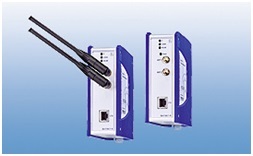WLAN Industrial Wireless LAN
WLAN (Wireless Local Area Network)


A WLAN (Wireless Local Area Network) commonly referred to as Wi Fi is a wireless computer network that links two or more devices together with wireless communication using the 2.4 GHz and 5 GHZ frequency band. The specification for implementation of WLAN (Wi Fi) is IEEE802.11n, this specification was created and implemented by the Institute of Electrical and Electronic Engineers in October of 2009. The previous versions of 802.11 are 802.11a released September 1999, 802.11b released September 1999 and 802.11g released June 2003. The latest version is 802.11ac released early 2014 and operates only in the 5 GHz band
The 5 GHz band is wider than the 2.4 GHz band, with more channels, which allows a larger number of devices to share the bandwidth but the larger wavelength of the 2.4 GHz band allows it travel a greater distance and penetrate walls over longer distances with less signal loss than the 5 GHz band (given the same transmitting power). The 2.4 GHz band is more susceptible to external radio interference from for example Bluetooth devices, cordless phones and microwave ovens Some wireless channels are country specific and not all channels are available in all regions.
The obvious plus points for using a WLAN is that connected devices use wireless technology rather than having the expense and inconvienience of using cables to connect devices, the down side is that wireless communication may be susceptible to interference from external sources.





